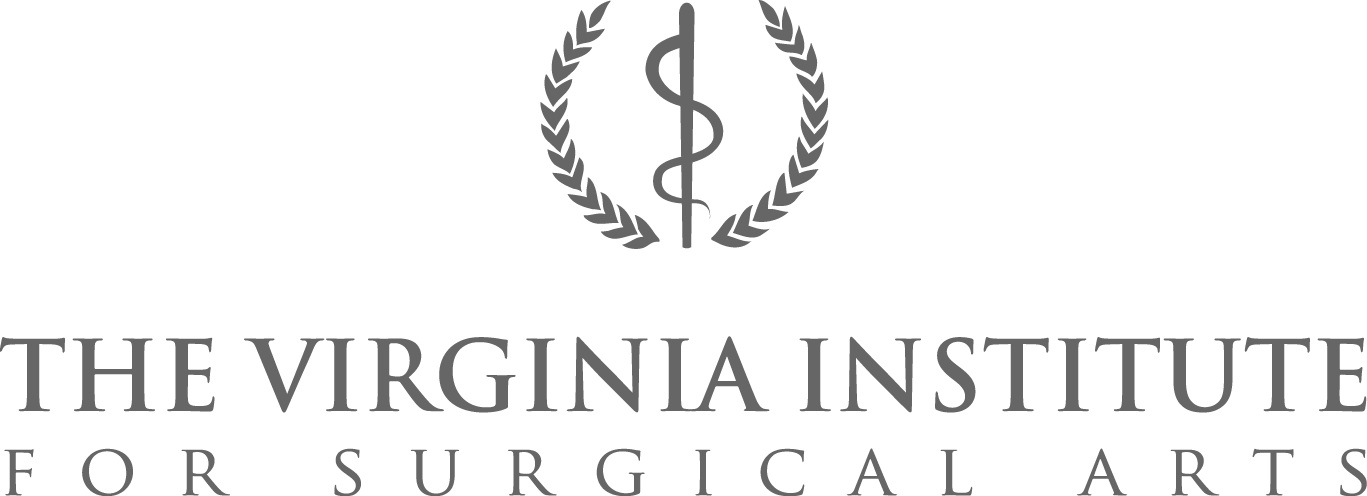Nasal and Sinus Disorders Details
Chronic Sinusitis
Chronic sinusitis, also called chronic rhino sinusitis, is the inflammation of the lining of your sinuses. This interferes with drainage and causes the mucus to build up within your nasal cavity. Up to 37 million Americans each year are effected by sinusitis and some of the symptoms include: headache; pain and pressure around the eyes, cheeks, and forehead; nasal congestion or blockage; facial swelling; low-grade fever; dental pain; and cough. Most sinus infections begin with a cold that blocks your sinus openings and decreases the drainage ability allowing an infection to develop. Patients who repeatedly get sinus infections may have a pre-existing condition such as a deviated septum, nasal polyps, or allergies.
Acute Sinusitis
Acute sinusitis is caused by a bacterial infection that afflicts one of the sinus cavities. It is typically indicated by fever, pain, and swelling over your sinus area. Patients with acute sinusitis complain of tenderness when they touch the affected area on their face.
Inflammation of the Nasal Tissue
An inflammation of the nasal tissue may initially be caused by an infection. A persistent inflammation however can result in a benign growth in the nasal airway and sinuses referred to as a nasal polyp. With an inflammation, most patients experience recurrent infections and they typically have nasal drainage with mucopurulent or yellow-green nasal discharge.
Nasal Congestion
Millions of Americans suffer from the discomfort of nasal stuffiness. This may be an indication of chronic breathing problems, swelling caused by allergies or viruses, or it may be from a blockage related to structural abnormalities inside your nose.
Nasal Obstruction
There are many causes of nasal obstruction however one of the major reasons is that a deviated septum (the partition between your nostrils) is crooked as the result of abnormal growth or injury. A deviated septum can partially or completely close one or both nasal passages and it can be corrected with a surgical procedure called a septoplasty. When cosmetic changes to the nose are performed at the same time, the combination procedure is called a septorhinoplasty.
Overgrowth of the Turbinates
The turbinates are the tissues that line the inside of your nasal passages and they are another cause of nasal stuffiness. Sometimes the turbinates need treatment to partially remove them or make them smaller in order to expand your nasal passages. Allergies can also cause internal nasal swelling and an allergy evaluation and therapy may be necessary.
Vasomotor Rhinitis
“Rhinitis” means inflammation of the nose and nasal membranes and “Vasomotor” means blood vessel forces. The membranes of your nose have an abundant supply of arteries, veins, and capillaries, and these have a great capacity for both expansion and constriction. Normally these blood vessels are in a half-constricted state but when a person exercises vigorously, their adrenaline increases causing constriction or squeezing of the nasal membranes so that the air passages open up and the person breathes more freely. The opposite takes place when a person has an allergic reaction or a cold. Your blood vessels expand, the membranes become congested or filled with excess blood, and your nose becomes blocked leading to vasomotor rhinitis. In the early stages, nasal stuffiness is temporary however if the condition persists for a long enough period, the blood vessels lose their capacity to constrict. They typically fill up when you lie down and the congestion often interferes with sleep. Surgery for vasomotor rhinitis offers dramatic and long-term relief.
Swallowing Problems
Swallowing problems may result in accumulation of solids or liquids in your throat that feel like postnasal drip. When the nerve and muscle interaction in the mouth, throat, and food passage (esophagus) do not work properly, overflow secretions can spill into your voice box (larynx) and breathing passages (trachea and bronchi) causing hoarseness, constant throat clearing, or chronic coughing. Swallowing problems may also be caused by gastroesophageal reflux disease (GERD), which is a return of your stomach contents and acid into your esophagus or throat. Heartburn, indigestion, and sore throats are common symptoms of GERD and it can be aggravated when you lie down after eating. Hiatal hernia, a pouch-like tissue mass where the esophagus meets your stomach, can also contribute to GERD.
Growths or Swelling
If you have growths or swelling in your food passage, this can slow or prevent the normal movement of liquids and solids.
Chronic Sore Throat
Post-nasal drip often leads to a sore, irritated throat. Even if there is no infection, the tonsils and other tissues in the throat may swell and this causes discomfort or a feeling of a lump in your throat. Successful treatment of the post-nasal drip will usually clear up chronic sore throat symptoms.
Septal Deviation
The most frequent nasal surgery an adult patient undergoes involves the correction of chronic nasal obstruction associated with a deviation of the nasal septum. The septum is the cartilaginous and bony wall that divides one nasal airway from the other and separates your nostrils. A septal deviation may result from trauma or a defect from childhood and surgical repair of a deviated nasal septum is usually performed in conjunction with the surgical reduction of the nasal turbinates to optimize the nasal airway.
There are many procedures available to correct nasal and sinus problems and some methods Dr. V uses include:
Balloon Sinuplasty
Balloon Sinuplasty is an advanced surgical procedure used to treat sinusitis and other related problems through minimally invasive techniques. This procedure involves inserting a thin endoscope into the nose without disrupting the surrounding bone and tissue. A small balloon is then gently inflated to widen blocked passageways and allow for proper drainage of sinus fluid and with this procedure, patients benefit from less bleeding and shorter recovery times.
Endoscopic Sinus Surgery
Endoscopic sinus surgery involves inserting a thin, lighted tube with a camera on the end into the nose so that Dr. V can visually examine the area. The endoscope is a 4-mm lighted tube that allows precise removal with minimizing tissue damage. Tiny surgical instruments are then inserted to remove the obstructive tissues and endoscopic sinus surgery does not require any incision since the procedure is performed through the nostrils.
Functional endoscopic sinus surgery (FESS) is the most common type of surgery for chronic sinusitis performed today. By using a small endoscope inserted through the nostril, the benefits of FESS include a shorter recovery time, reduced risk of infection, decreased postoperative pain, and less scarring.
Image-Guided Surgery
Imaged-guided sinus and nasal surgery combines endoscopic techniques with a Computed Tomography (CT) imaging scan for more precise results. The CT scan is performed simultaneously during surgery to guide Dr. V to the targeted area within your sinuses where blockage or infection occurs. This technique creates a computerized model of your skull and during your procedure, blockages or obstructions within the sinuses are cleared using tiny surgical instruments. With image-guided surgery, patients benefit from faster recovery times, less discomfort and more accurate correction of sinus problems.
Turbinate Somnoplasty®
Turbinate Somnoplasty® is a quick and effective way to relieve chronic nasal obstruction due to enlarged turbinates without the pain associated with traditional techniques. Unlike standard electrosurgical approaches, the Somnoplasty System continuously monitors temperature and power providing Dr. V complete control over the procedure. This procedure is performed in an outpatient setting under local anesthesia and since your delicate mucosa is preserved, you will experience minimal, if any, bleeding. The Turbinate Somnoplasty® procedure typically takes less than two minutes per turbinate and no nasal packing is required so patients do not require any postoperative analgesic.
Rhinoplasty Surgery
Aesthetic nasal surgery (rhinoplasty) refines the shape of the nose and because the nose is the most prominent feature on your face, even slight alterations can improve your appearance. To reshape your nose, the skin is lifted allowing Dr. V to remove or rearrange the bone and cartilage. The skin will then be re-draped and sutured over your new frame.
Septoplasty
Surgery to straighten the septum is called septoplasty, submucous resection of the septum, or septal reconstruction. Your septum and nasal passages are lined with a layer of soft tissue called the nasal mucosa. Before surgery, Dr. V may use an endoscope to look at your nasal passages to see the shape of your septum and in some cases; she may use endoscope during surgery. To repair the septum, Dr. V works through your nostrils making an incision to separate the mucosa from the underlying cartilage and bone. She will then trim or straighten the bent cartilage and replace the mucosa over the cartilage and bone. You will receive local or general anesthesia for the 60-90-minute operation, which is performed in an outpatient surgery center. Septoplasty may be performed along with other procedures to treat chronic sinusitis, nasal inflammation, bleeding, nasal polyps, or to correct sleep apnea.
Septorhinoplasty
Septorhinoplasty is a combination of Rhinoplasty and Septoplasty surgeries. Rhinoplasty is performed for cosmetic or functional reasons to reshape the nose while Septoplasty corrects a deviated septum to restore normal breathing function. Nose surgery is performed for either cosmetic or functional reasons and septorhinoplasty is performed for both reasons: to reshape your nose to make it cosmetically more in balance with the rest of your face and for the functional purposes to improve breathing by correcting a septum that became deviated through injury, trauma, disease or sometimes a previous surgery. Your septorhinoplasty surgery will take approximately two hours and it will be performed under general anesthesia. A small cut will be made inside your nose allowing Dr. V to lift up the nasal mucosa and anything that obstructs the airway is removed or repositioned. Your nose will be reshaped externally through the same or different incisions and after your surgery, swelling and bruising are to be expected but these symptoms subside in a few days.





